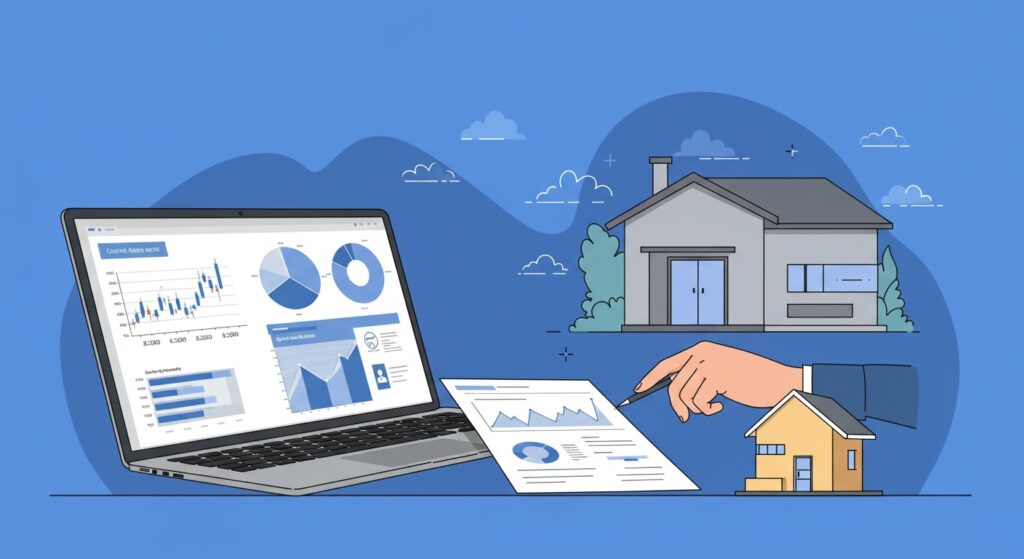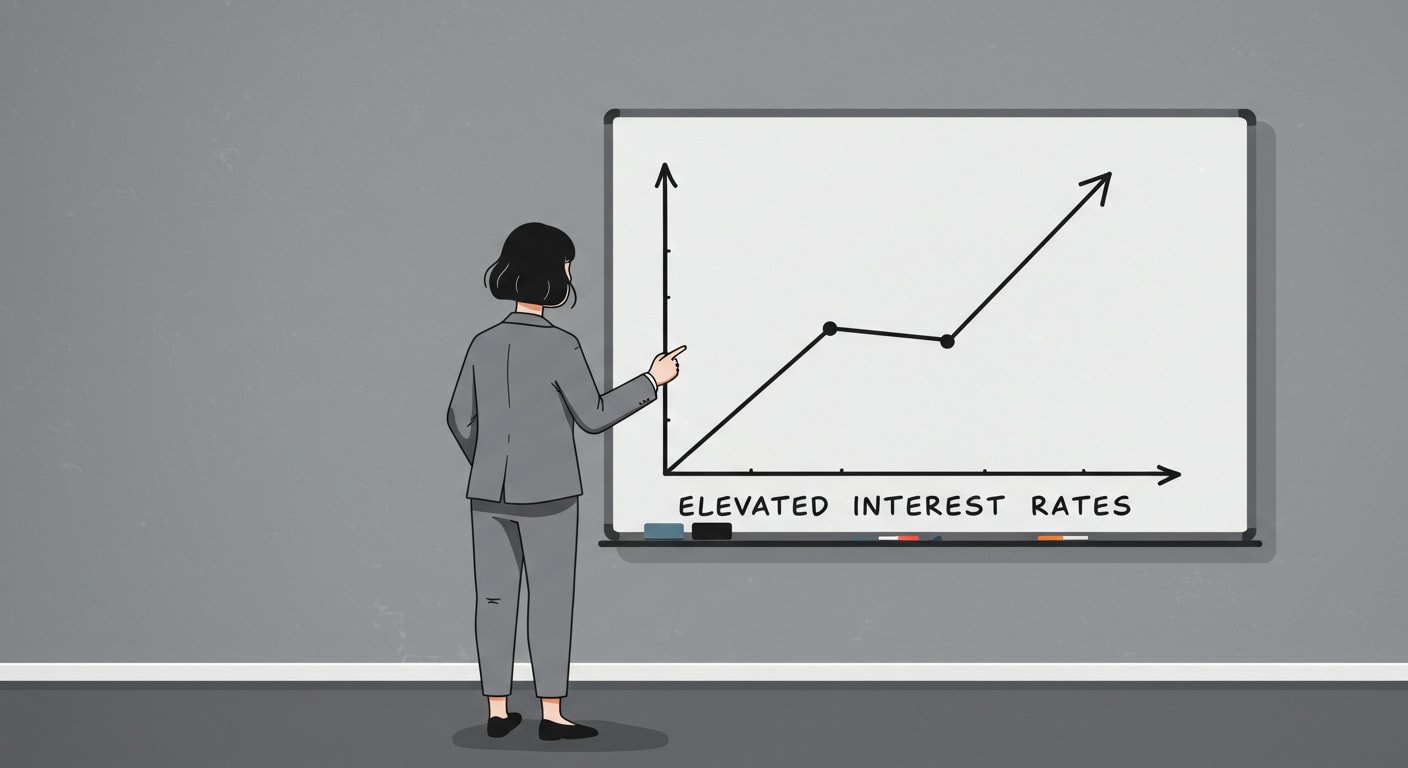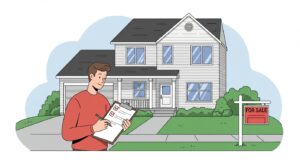
Is The House-Flipping Boom Over for Investors?
Over the past decade, house flipping has drawn in both seasoned real estate investors and ambitious newcomers, lured by the promise of turning fixer-uppers into fast profits. And why not? The idea of buying low, renovating smart, and selling high has always been an appealing way to build wealth in real estate.
But in 2025, house-flipping investors face a much different market. Home prices are still high, but appreciation has slowed. Interest rates remain elevated—Fannie Mae projects that 30-year mortgage rates will hover around 6.8% throughout the year—making financing more expensive and reducing buyer affordability. On top of that, housing inventory remains tight, meaning fewer opportunities to snag undervalued properties with strong profit potential.
Before you decide whether flipping houses should be your next business move or side hustle, take a closer look at how today’s market conditions impact profitability. While opportunities still exist, successful investors will need to be more strategic. By adjusting your approach and implementing the right tactics, you can still thrive, even in a tighter real estate market.
The State of the Industry for House-Flipping Investors in 2025
Real estate investors in 2025 are navigating a market that looks vastly different from the rapid-growth years of the past. Elevated mortgage rates are making financing more expensive, while stabilizing home prices limit opportunities for quick appreciation. Persistent inventory shortages mean fewer undervalued properties to flip, and economic uncertainty adds an extra layer of risk to every investment.
While flipping houses is still a profitable venture, investors must adapt to these challenges with sharper strategies and a more calculated approach to ensure success.
Elevated Mortgage Rates Challenge Real Estate Investors
As of early 2025, 30-year fixed mortgage rates are projected to remain elevated, averaging around 7% throughout the year. These sustained high rates present significant challenges for house-flipping investors:
- Increased Financing Costs: Higher interest rates lead to steeper monthly payments for hard money loans and other financing options, reducing overall profit margins.
- Diminished Buyer Purchasing Power: Elevated mortgage rates can deter potential buyers or limit their purchasing power, making it harder to sell renovated properties quickly and at desired prices.
- Stricter Lending Criteria: Lenders may tighten their requirements in a high-rate environment, making it more challenging for investors to secure favorable loan terms for investment properties. Investors relying on traditional loans may also face higher down payment requirements, further increasing the upfront capital needed to secure a flip.

These factors necessitate meticulous financial planning and market analysis for investors aiming to navigate the current housing market successfully.
Stabilizing Home Prices Impact House-Flipping Strategies
The U.S. housing market is expected to experience modest growth, with home prices projected to rise by 3% or less. This stabilization presents both challenges and opportunities for house-flipping investors:
- Limited Appreciation Potential: With slower home price growth, the traditional strategy of buying low and selling high becomes less lucrative, necessitating more precise property selection and value-add improvements.
- Increased Competition: Stable prices may attract more investors to the market, intensifying competition for undervalued properties and potentially driving up purchase prices.
- Focus on Operational Efficiency: To maintain profitability, investors must streamline renovation processes, control costs, and implement effective marketing strategies to ensure quick turnovers.
Adapting to these market conditions requires a strategic approach, emphasizing diligent planning and execution to achieve desired returns in a stabilizing housing market.
Persistent Inventory Constraints Affect House-Flipping Prospects
Despite recent increases, housing inventory remains below pre-pandemic levels, presenting challenges for house-flipping investors. As of December 2024, national active listings were still 15.7% below December 2019 figures.
This limited supply affects flippers in several ways:
- Fewer Acquisition Opportunities: A constrained market means fewer distressed or undervalued properties are available for purchase, making it harder for investors to find viable projects.
- Elevated Purchase Prices: Continued low inventory can sustain higher property prices, increasing the initial investment required and squeezing potential profit margins.
- Extended Holding Periods: With limited options, buyers may take longer to find suitable properties, potentially prolonging the time flippers hold onto properties before resale—adding to holding costs like property taxes, insurance, and maintenance.

Navigating these inventory constraints requires planning and adaptability to maintain profitability in the current housing market.
Economic Uncertainty and Its Impact on Flipping Houses
Economic uncertainty significantly influences the housing market. Factors such as potential recessions, policy changes, and global events can affect buyer confidence and market stability.
For instance, concerns about economic downturns can lead to reduced consumer spending, impacting the demand for flipped properties. Additionally, policy shifts resulting from political events, such as presidential elections, can introduce unpredictability in housing regulations and taxation, further affecting investment strategies.
Investors must stay informed about these economic indicators and adapt their approaches accordingly to mitigate risks and capitalize on emerging opportunities.
How to Succeed in Today’s House-Flipping Market
Despite all the bad news, there’s still a lot of room for flippers to turn a significant profit. By strategically selecting homes, having a streamlined selling strategy, and optimizing every step of assessing and fixing up your flips, you can easily win deals and benefit from a profitable market. Consider these best practices:
Use AI as Part of Your Research Process
House-flipping investors who embrace AI-powered tools can gain a competitive edge in today’s challenging market. Success is about making smarter, data-driven decisions that optimize profitability and reduce unnecessary costs. AI can streamline key aspects of real estate investing, helping you:
- Identify High-Value Investment Opportunities – Quickly scan available listings to pinpoint properties with the strongest potential for profit.
- Analyze Market Trends with Precision – Use AI-driven insights to focus on neighborhoods with strong demand, appreciating home values, and limited inventory.
- Estimate Resale Value with Confidence – Run predictive pricing models to determine the best listing price after renovations.
- Enhance Your Marketing Strategy – Leverage AI-optimized platforms to target the right buyers, create compelling property listings, and sell faster.

By integrating AI into your workflow, you can eliminate guesswork, save money on research and analysis, and move swiftly on the right opportunities. In a market where every decision counts, staying ahead with smart technology can help house flippers boost their average profit margin and scale their business efficiently.
Shift Your Focus to Fast-Turnaround, Cash-Flow Positive Deals
Waiting for the perfect house-flipping opportunity could leave you sitting on the sidelines. With home price appreciation slowing and financing costs remaining high, the best approach is to focus on properties you can improve and resell quickly. Rather than chasing elusive high-ROI flips, savvy investors should look for homes with manageable renovation costs, low holding costs, and high appeal to active buyers.
A volume-based strategy can help balance thinner margins per deal by increasing overall cash flow. Instead of waiting for the “unicorn” flip, prioritize properties with strong potential for a quick turnaround. Finding, renovating, and selling properties at a steady pace allows you to mitigate risk and maintain liquidity.
Adapt to Market Realities with Smarter Financial Planning
With elevated mortgage rates and potential economic fluctuations, house-flipping investors need to be strategic about budgeting, financial management, and the tools they employ. Every extra month a property sits on the market means additional holding costs, including mortgage payments, property taxes, insurance, and maintenance.
To stay ahead, consider these key financial strategies:
- Budget for Higher Financing Costs – With traditional loans carrying steeper interest rates, explore alternative options like working with a hard money lender, securing private lenders, or paying cash to minimize long-term interest payments.
- Prepare for Extended Holding Periods – Build a financial cushion to cover expenses in case of unexpected delays. Having cash reserves ensures you’re not forced into a rushed sale at a lower price.
- Prioritize Value-Adding Renovations – Focus on upgrades that deliver the biggest impact for the lowest cost, such as modernizing kitchens and bathrooms, enhancing curb appeal, and improving energy efficiency.
Flipping houses in 2025 requires a flexible, numbers-driven mindset. By managing your investments wisely and capitalizing on the right opportunities, you can maintain steady profits.
Sell Smarter: A Cost-Effective Alternative to FSBO and Traditional Agents
Flipping houses is already a time-intensive process with managing renovations, estimating rehab costs, and keeping track of holding costs. But when it comes time to sell, many investors face a tough choice: go the For Sale By Owner (FSBO) route and handle everything alone or pay a hefty real estate agent commission that eats into their gross profit.
While some private investors turn to flat-fee brokers or discount agents, these options often still require paying around 2% in agent fees—a steep price, especially when selling multiple properties. Many investors lose money unnecessarily, even on fast-moving deals.

But there’s a better way to save money and sell efficiently. Instead of paying thousands in commissions, investors can use a pay-as-you-go model, where they pay a low daily rate while the property is listed. If the home sells quickly, the total cost can be just a few hundred dollars—a fraction of what a traditional lender-backed sale with an agent would cost. With traditional agent commissions and closing costs adding up quickly, this alternative allows house flippers to save money while keeping full control over the selling process.
What makes this model so effective? It gives investors the tools they need to sell without the overhead. With direct MLS access, syndicated postings on major real estate platforms, and marketing support, sellers can reach more buyers without relying on an expensive real estate agent. This approach maximizes property value, speeds up sales, and ensures investors keep more of their hard-earned money.
Incorporate Investor Tools Into Your New House-Flipping Strategy
While the house-flipping boom of the past decade has slowed, opportunities for real estate investors still exist—if you know where to look. Elevated mortgage rates, stabilizing home prices, limited inventory, and economic uncertainty have made it more important to be strategic. Successful house-flipping investors in 2025 will focus on fast-moving, cash-flow-positive deals, smart financing strategies, and leveraging technology to stay ahead of the market.
But here’s the good news: demand for renovated, move-in-ready homes remains strong. Buyers may be more selective, but homes that are well-priced and professionally marketed still sell quickly. By focusing on efficiency, accurate pricing, and cost-effective renovations, investors can continue to see strong returns.
At ListingSpark, we provide the tools and support to help you sell investment properties faster and for more money—without the traditional agent commission. Our pay-as-you-go pricing model keeps costs low, while our MLS access, smart pricing tools, and high-visibility marketing ensure your property gets in front of the right buyers. Whether you’re flipping one house or managing a portfolio of properties, we make the selling process seamless, cost-effective, and fully in your control. Get started with ListingSpark today to maximize your house-flipping profits in 2025.
Related Posts
What to Know When Selling Your Home: Essential Tips for Success
Selling your home is one of the most significant financial transactions you’ll ever make. Whether you’re a first-time seller or have been through the process before, navigating the complexities of the real estate market requires…
Digital Home Sales: How to Sell Your Home Online in 7 Steps
Selling your home no longer means you have to put up yard signs, organize open houses, or even hire a listing agent. Instead, you can learn how to sell a house online at a fraction…
Flipping a House Checklist: Steps to Sell for Maximum Profit
You got a great deal on an investment property. You spent countless hours going back and forth with contractors and subcontractors. You’ve matched and picked out paint, the perfect paint. You’ve pulled teeth to get…




